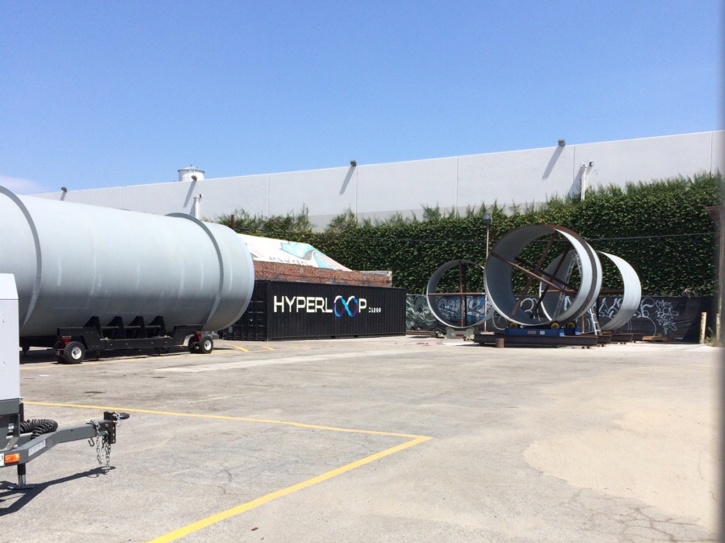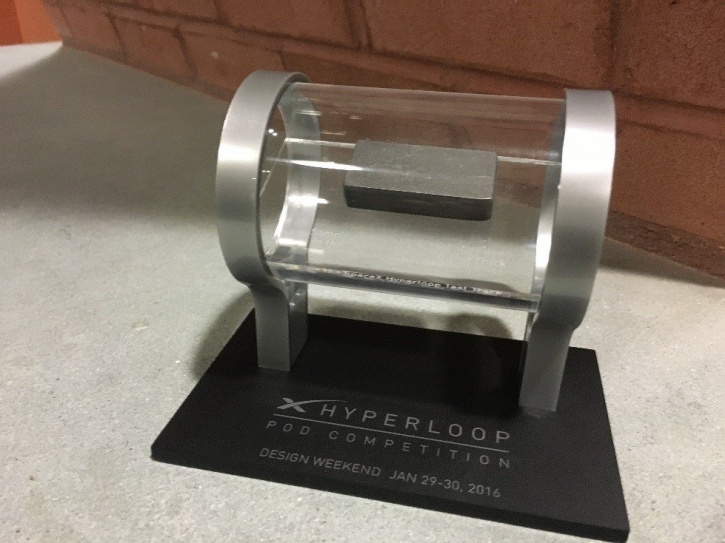What Are Exoplanets And How NASA Detects Life Beyond Our Solar System
Bharti Airtel Set To Acquire Telenor India Within This Year
Google Celebrates NASA’s Discovery Of Seven Earth-Like Planets With An Animated Doodle
Some Home Remedies That Might Sound Bizarre But Actually Work Like A Charm
Akshay Kumar Feels He Has Made Enough Money, Now Wants To Focus On Content & Characters
Delhi ATM Dispenses Fake Rs 2000 Notes From ‘Childrens Bank of India’ With ‘Churan Lable’
Adolf Hitler’s Personal Telephone During World War II Is Up For Auction In The US
From Salman Khan To Rekha, Neil Nitin Mukesh’s Wedding Reception Was Quite A Starry Affair
Indian Team Makes It To The Hyperloop Design Competition Finals Could Redefine The Future Of Travel
Recently we spoke about Elon Musk's dream project, the Hyperloop, making travel possible at the speed of sound. To make this happen, Musk's space program, Space X, hosted a Hyperloop Pod Competition giving students the opportunity to build, what is being touted as, the future of transportation. The University of Cincinnati is one of the universities to make it to the finals of the competition, and that makes it worth reading about because it has been made possible by an Indian team! To bring you up to speed, the idea of travelling at the speed of light was conceived by Elon Musk, the CEO, CTO and founder of Space X, CEO and product architect of Tesla Motors, and a very cool guy, back in 2013, when he was stuck in traffic. He thought of this pod being propelled through a tube 12 feet in diameter, transporting 20-30 people faster than anyone could ever imagine. The tube would have low air pressure in order to minimise the air resistance, making it possible for the pod to go that fast. Hyperloop would make a journey from Delhi to Mumbai possible in 1 hr 14 mins, making it the fastest mode of travel for man.
The birth of Hyperloop UC
In order to make this possible, Space X announced a design competition that'd be tested on their one-mile-long test track built in California. Now to make a design that can facilitate a pod going over 760 miles per hour is no joke, and neither is it possible for one person. Thus, in order to make it happen, third-year aerospace engineering graduate student, Dhaval Shiyani, formed a team of students he knew would play their part perfectly. Hyperloop UC happened.
Over 1,000 (300+ teams) from all across the world applied for the competition, including team Hyperloop UC. The selection process was rather straightforward. Teams had to present what they wanted to achieve with their designs, including the obstacles that they might face turning the design into reality. Off the 300, 124 teams from 20 different countries submitted their final designs at the Hyperloop design weekend at the end of January, earlier this year,

“The potential of such a transportation system is enormous. Hyperloop has spawned a technology movement across the world and UC—being a top research university—has befittingly taken up the challenge. We are applying our classroom knowledge to this real-world, groundbreaking, new technological application. We have the task of building something wholly original here. We have no guidelines on how to build this pod which makes things very challenging and, at the same time, all the more interesting because it has never been done before. It’s immensely exciting to think that we’re one of the very first people in the world working on this concept, a concept that could entirely change the way we travel in the near future,†said Dhaval.
Describing their concept, team member Kiran Siddappaji, who's also an aerospace engineering masters and Ph.D. student said, “Some of the innovative features we have is a counter-rotating fan, which is a better compression system than a single stage fan, because of its torque balance, high-efficiency, high-pressure ratio.â€






